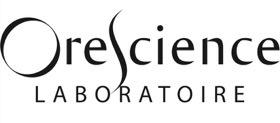On the packaging of cosmetic or dermocosmetic products, certain reassuring claims are frequently highlighted to emphasise the product’s tolerance, such as “dermatologically tested” or “hypoallergenic”. Although widely used, these claims are often misunderstood by both consumers and some brands, particularly new entrants to the sector. Driven by the dynamics of social media, many digital content creators and independent entrepreneurs are now launching their own product ranges, sometimes without a full understanding of the regulatory requirements governing formulation and market placement.
Yet these two claims refer to very different realities, particularly from a regulatory, scientific and marketing perspective.
What “hypoallergenic” really means
When a product is described as “hypoallergenic”, it means that its formula has been specifically developed to minimise the risk of allergic reactions. This claim does not guarantee the complete absence of reactions, but reflects a rigorous formulation approach aimed at reducing the likelihood of allergies as much as possible, notably through the selection of ingredients with a low sensitising potential and the exclusion of substances recognised as common allergens.
In practice, this involves:
- rigorous selection of raw materials, favouring ingredients known for their very low allergenic potential
- avoiding commonly implicated substances, such as parabens, formaldehyde-releasing preservatives (bronopol, DMDM hydantoin), certain UV filters (such as benzophenone-3), allergenic fragrances, phenoxyethanol, or specific essential oils
- particular attention to regulated allergens, notably fragrance allergens that must be listed in the INCI when present above specific thresholds
It is important to remember that certain naturally derived ingredients, although widely regarded for their mildness or good skin tolerance, may still present an allergenic potential in some individuals. This is particularly true of sweet almond oil in people with nut allergies, or of certain essential oils, which naturally contain sensitising compounds such as linalool or limonene. As skin sensitivity varies from person to person, an ingredient considered safe for the majority of the population may still trigger a reaction in a small number of users.
A claim governed by European regulation
The term “hypoallergenic” is not strictly defined under Regulation (EC) No. 1223/2009 on cosmetic products, but it is regulated under Regulation (EU) No. 655/2013 on cosmetic claims. This regulation requires that any claim, including “hypoallergenic”, be supported by sufficient, verifiable evidence, based on relevant data.
Therefore, a brand wishing to use the term “hypoallergenic” must be able to demonstrate that the product has been formulated to minimise the risk of allergic reactions. This involves careful ingredient selection and the implementation of skin tolerance testing.
These tests may include, where appropriate, protocols such as the HRIPT (Human Repeat Insult Patch Test) or RIPT, in which the product is repeatedly applied to the skin of a panel of volunteers over several weeks under dermatological supervision, in order to assess its sensitising potential.
Without sufficient justification, the use of the “hypoallergenic” claim may be considered misleading by the relevant consumer protection or cosmetic regulatory authorities, both in Europe and internationally. This could expose the brand to risks of non-compliance, including administrative, commercial or customs-related sanctions depending on the country.
What “dermatologically tested” really means
The claim “dermatologically tested” indicates that the product has undergone skin tolerance testing under the supervision of a dermatologist, typically on healthy volunteers. This test aims to confirm the absence of visible reactions (redness, irritation, discomfort) following application of the product. It therefore reflects good tolerance under controlled conditions.
However, this claim is not strictly regulated by a specific legal framework. No official protocol is imposed regarding the number of volunteers, test duration, or precise evaluation criteria. It does not guarantee the absence of allergenic ingredients, nor a proactive reduction of sensitisation risk. A product may still contain ingredients with allergenic potential while displaying this claim, provided that no adverse effects were observed during the test.
Two claims, two regulatory approaches
Although often perceived as equivalent, the claims “dermatologically tested” and “hypoallergenic” actually correspond to very different levels of requirement.
The former is limited to an observation of tolerance on healthy skin, while the latter involves a much stricter formulation approach aimed at reducing allergy risk. The “hypoallergenic” claim must be supported by relevant data in accordance with Regulation (EU) No. 655/2013, and usually relies on clinical sensitisation studies, such as HRIPT or RIPT protocols. It is primarily intended for sensitive or reactive skin types and requires more stringent formulation decisions.
The importance of reliable regulatory support
When developing cosmetic formulas, it is essential to define early in the R&D process which claims will be made. These decisions directly influence ingredient selection, testing protocols, and the product communication strategy.
Laboratoire Orescience offers comprehensive support covering both bespoke cosmetic formulation and full regulatory management, in compliance with European and international requirements. This ensures your claims, testing processes and market launches are fully secured, no matter the target market.
Validating claims with regulatory compliance
The decision to display the claims “dermatologically tested” or “hypoallergenic” on a product is not merely a marketing choice, it fully engages the brand’s responsibility, both from a regulatory and scientific perspective.
At Laboratoire Orescience, we ensure that every claim is based on robust, substantiated data and aligns with your brand positioning. Our commitment: to deliver compliant, reliable and effective formulations, perfectly tailored to the expectations of your target markets and the requirements of the relevant authorities.
Further articles to explore


